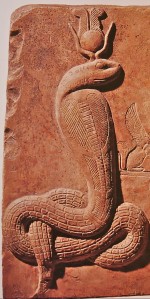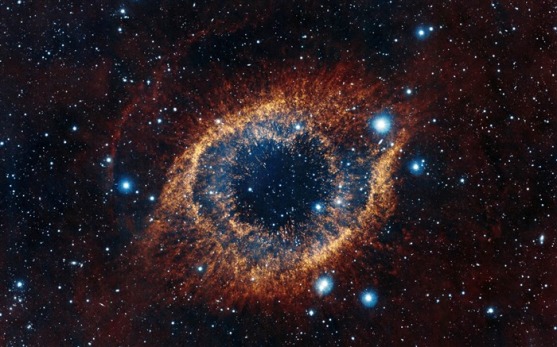For those of you just dropping by, we’re discussing a fragment of an ancient text entitled Kore Kosmou. In it, Isis is the Divine Teacher and She instructs Her “Wondrous Son” Horus in spiritual truths.
So let’s start with the title of the text. Unlike some other ancient texts, it actually does have a title: Kore Kosmou. The simplest translation is Virgin (or Maiden) of the World. “Kore” is “girl, maiden, virgin,” as, for example, Persephone is called Kore—Maiden or Daughter—to Demeter’s Meter—Mother. Kosmou is “of the world, universe.”
Oh, but it ain’t that simple.
As is so often the case when discussing Things Ancient, interpretations vary. In fact, as far as I’ve seen, there has yet to be a single agreed-upon scholarly interpretation of the title, though they all have something to offer us.
So let’s have a look. First of all, who is this Virgin, Maiden, or Daughter of Whom we speak?

The most obvious answer is that She is Isis. Isis is the teacher in this text and She, like so many Egyptian Goddesses, has a youthful Form. In a Hymn to Osiris, Isis is even called the Great Virgin/Maiden (hwn.t or hunet). She is also a Divine Daughter, the daughter of Heaven, Nuet, and of Earth, Geb. What’s more, if the dating of the text to 1st-3rd century CE is correct, Our Goddess is by that time considered a kosmokrator, a universal ruler, so it’s no stretch to consider Isis to be the Maiden of the Universe in the title.
So, problem solved?
Oh, heck no.
What if the Virgin of the Universe isn’t Isis at all? It may be that the Virgin is Nature Herself. Nature is sexually virgin in the tale. She creates Her own abundance from seeds which She Herself supplies to the Sole Ruler and which the Sole Ruler then returns to Her in order to start the chain of fruitfulness upon the earth. We also find identification of Kore with Nature in another Hermetic text, the Perfect Discourse. That text reiterates that the Creator “does not possess the nourishment for all mortal living creatures, for it is Kore Who bears the fruit.” The text is, after all, a creation story, so perhaps the title refers to the creation of the Virgin Universe.

On the other hand, Isis Herself may certainly be considered to be Nature. Plutarch calls Her “the female principle in Nature” (On Isis & Osiris, 53). We have also discussed the idea that Isis’ name of “Throne” may refer to Her as the Original Place of Being. So perhaps we are intended to understand that Isis, Nature, and Kore Kosmou are one.
And that’s all fine. But now we come to the more interesting interpretations.
They revolve around another meaning of the word kore. For it also means “pupil,” as in the pupil of the eye, that black, liquid, bottomless center in the center of the eye.
Now at first, that seems rather strange. How can a maiden and the pupil of the eye be related concepts? But it turns out that many cultures have an expression for the pupil that translates as “the girl in the eye.” In fact, according to ethnologists who’ve studied such expressions, about one-third of the languages in the world have a term for the pupil of the eye that refers to a small human or human-like being. For example, Spanish speakers call the pupil the nina del ojo, the “girl of the eye,” which ultimately derives from Latin, which had the expression: pupilla, the “little girl” of the eye. (“Figurative Language in a Universalist Perspective,” Cecil H. Brown and Stanley R. Witkowski, American Ethnologist, Vol. 8, No. 3, Symbolism and Cognition (Aug., 1981), pp. 596-615.)
The origin of the expression is probably the fact that when we look into someone’s eyes, we can see a tiny reflection of ourselves in the black mirror of the pupil.
The ancient Egyptians had this expression, too. Pyramid Text 155 says to Osiris, “Take to thyself the damsel [girl] who is in the eye of Horus; open thy mouth with her.” (That is Samuel Mercer’s translation; Faulkner translates it “pupil of the eye of Horus.” It is both.) Later, the expression was simplified to “the girl in the eye” and then just “the girl” so that by the time the Kore Kosmou was written, the pupil was frequently just called “the girl.” And yes, the Greek in which our text was written also has the expression: the pupil of the eye is the kore.
Not every language in which this expression occurs sees a girl in the pupil; some see babies, little men, or even angels. But in Egypt, it was a hunet, a young woman. Why?
This is pure speculation, but when it comes to the Eye of Horus, perhaps it is because His mother Isis is the young woman Who is reflected in His own Child God’s eye. Or perhaps it is because of the power of the Uraeus “Eye” Goddesses in Egypt.
There are many myths in which the Divine Eye goes forth in the form of a powerful Serpent Goddess, usually as a great protective power.
Isis is among these Goddesses of the Eye. In the Festival Songs of Isis & Nephthys from the Bremner-Rhind papyrus (Faulkner translation), Isis protects both Osiris and Horus and She is “Mistress of the Universe, Who came forth from the Eye of Horus, Noble Serpent which issued from Re, and which came forth from the pupil in the eye of Atum when Re arose on the First Occasion.”
But there are more mysteries of the eye. A praise of Amun-Re from Hibis demonstrates the power and mystery of the Divine Eye: “O Amun-Re Who hides Himself in His iris/pupil, Ba Who illumines by means of His oracular wedjat-eyes, Who manifests a manifestation: sacred one Who cannot be known. Brilliant of visible forms, Who hides Himself with His mysterious akh-eye: mysterious one, Whose secrets cannot be known.”
As the physical eyes are the organs of perception of the light of the sun and the moon, so the Divine Eyes can illuminate or conceal the deep Mysteries hidden within Their depths, most especially at the core, in the pupil, in the deepest, yet most reflective, part of the eye. For in the darkness of the pupil of the eye lies concealed spiritual illumination.
Thus it seems that the title of our text may also be translated as Pupil of the Eye of the World/Universe and that, as would-be initiates, we should understand the blackness of the pupil to conceal spiritual light. And indeed, in the Kore Kosmou, the Hermetic teacher Isis, begins the process of illuminating Her Wondrous Son, Horus, Who is Himself the possessor of Egypt’s most important eye, the talisman of talismans, the offering of offerings, the Eye of Horus.
The Kore Kosmou teaches about creation, and souls, and reincarnation, and the nature of Divinity. It reveals Mysteries—but not yet all of them—to the Hermetic student, Horus. Thus a title like Kore Kosmou, with its hidden meanings, is quite appropriate to this teaching text.
Isis is the Girl in the Pupil of the Eye. As a Holy Cobra Goddess, She comes forth from the Pupil of the Eye of Atum and She is a Divine Eye Goddess Herself. She knows the secrets of the darknesses of the kosmos (cosmos), a word that not only means “world” or “universe,” but also order, and so perhaps even Ma’et. Thus She is the one Who can appropriately reveal—or conceal—the Mysteries of the creation, ordering, and structure of the universe and the souls within it.
So it seems I am not yet done with the Kore Kosmou. I’m still researching and reading and I think I shall perhaps have some more to say on this subject next time.
But on the other hand, perhaps we should understand Horus as the Pupil of the Eye of the World; He is, after all, the student or “pupil” of His mother. And yes, that word is related, too…







